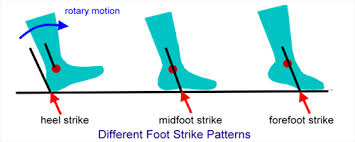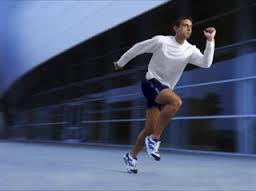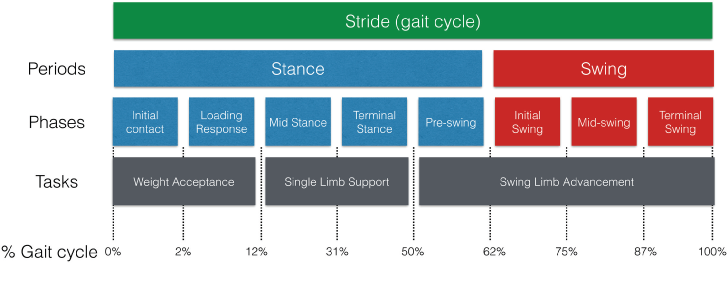
© Ennis Physiotherapy Clinic, 3A Barrack Close, Barrack Street, Ennis, Co. Clare V95 X437 Tel: (065) 6840757
Spinal Problems Neck + Back Pain Disc Injury Whiplash Posture
Lower Limb Injuries Walking + Running Ligament Injury Snowsports Injury Home Exs Prog
Upper Limb Injuries Ligament Sprains Tendon+Muscle Golf + Bike Set Up Useful Links

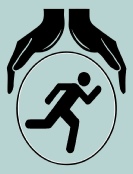


065 6840757

Mon - Fri 9.30am - 8.30pm


3a Barrack Close, Barrack St., Ennis, Co. Clare V95 X437
Running is a fundamental of many sporting activities. Straight line running is often used as a key part of basic fitness training and fitness programmes, even for sports that primarily use multidirectional running skills. Many overuse / overloading injuries are related to the way we run. Efficient running mechanics will maximise performance and minimise the risk of injury.

Normal walking or running patterns are divided into a number of phases. There is a Stance + Swing Phase for each leg during each walking or running cycle. Walking or running speed is determined by the number of cycles x stride length.
Stance phase occurs when the leg is in contact with the ground and is subdivided into Foot Landing, Midstance and Toe Off / Propulsion phases.
Swing phase occurs when the leg is off the ground and is divided
into Follow Through, Forward Swing and Foot Descent.
The relative duration of stance and swing phase varies significantly
depending on the activity and speed.
A few key elements are important for efficient running.
- Body alignment and good posture (form) are key factors to consider when running. The body segments should be in good alignment when weightbearing in stance phase – head, trunk and legs all in a line. The body should not be bent in the middle at the pelvis / hip area causing the centre of gravity to be too far to the rear making for inefficient running. The centre of gravity should be directly overhead the arch of the foot when the weight is on the foot during midstance. If the foot lands too far ahead of the centre of gravity the runner is ‘over-striding’ and this has a braking effect on forward movement.
- During walking there is normally a gap of up to 3 cm between the lines along which the feet are moving – i.e. the base of support. As speed increases into running the feet land closer to the midline (more directly under the centre of gravity) but
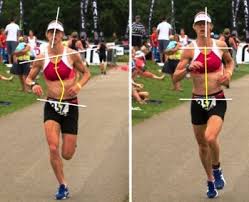 should not cross the midline. In walking the legs are usually turned outwards slightly during stance phase but when running tend to point directly forward as speed increases
should not cross the midline. In walking the legs are usually turned outwards slightly during stance phase but when running tend to point directly forward as speed increases - Ankle and foot/big toe flexibility should allow a forward lean of the body when in stance phase on the leg with the foot pointing forward. It should be possible, standing with the heel flat on the floor and the toes pointing straight ahead, to bend forward at the ankle so that the knee moves directly overhead the toes (stand with toes against a wall and bend knee forward to touch the wall). In this position it should be possible to bend the big toe upwards to lift it off the ground by 350 - 450.
- The arms should be bent at the elbow and drive back and forth while hanging relaxed from the shoulders. The hands should not come across the midline of the body in front i.e. as occurs with too much rotation of the upper back and shoulders. The forward and backward movement of the arms should be synchronised to counterbalance the movement of the opposite legs.
- The legs should move back and forth from the hips with the feet moving along a line parallel to each other and the foot pointing slightly outwards or more directly forward as speed increases.
- The pelvis should be kept level, or neutral, when viewed from in front or from the side. Commonly, with muscle weakness, the pelvis on the swing leg side (which is off the ground and moving forwards) is not held level and dips down excessively. This is seen in the head and trunk moving up and down excessively with each stride which is wasted (inefficient) vertical movement when horizontal progression is what is required.
Important movements need to occur at the joints of the ankle + foot / hind + forefoot during the different stages of the stance phase in order for the mechanics to work efficiently.
During the Foot Landing in stance phase, as the leg assumes weightbearing the foot can behave in a variety of ways. In walking, jogging and long distance running there is typically a sequence of heel strike, progressing to placing the foot flat on the floor before heel raise leading to toe off into the swing phase.
During middle distance running where the speed is more moderate the foot may land relatively flat (or with the heel touching just before the rest of the foot) with shorter time span before heel raise and toe off.
At high speeds the foot remains pointing toe down and only the forefoot makes contact with the ground.
The foot should not land excessively in front of the hip / centre of gravity (‘over- striding’) as this has a ‘braking’ effect on the body and slows forward speed. It is associated with ‘Pawback’ or the hamstrings becoming excessively used to pull the limb backwards. With heel strike ahead of the centre of gravity there is a jarring braking force passed upwards along the shin and thigh bones.
 There may be overuse of the muscles on the front of the shins holding the foot and toes upwards to get heel strike and also to control the foot as it descends to flat on the floor – potentially causing extensor tendonitis. In contrast excessive running on the forefoot / ball of the foot may be associated with overuse strain of the Achilles tendon and the deep flexor muscles of the leg – shin splints. This is especially so where the athlete lands on the toes and lets the heel drop to the floor during mid stance prior to heel raise for toe off
There may be overuse of the muscles on the front of the shins holding the foot and toes upwards to get heel strike and also to control the foot as it descends to flat on the floor – potentially causing extensor tendonitis. In contrast excessive running on the forefoot / ball of the foot may be associated with overuse strain of the Achilles tendon and the deep flexor muscles of the leg – shin splints. This is especially so where the athlete lands on the toes and lets the heel drop to the floor during mid stance prior to heel raise for toe off
The hip on the non weightbearing (Swing) side should not be allowed to dip/drop down excessively - which is seen with excessive bounce vertically (of trunk and head). It is inefficient and indicates weakness in the hip muscles of the stance/weightbearing side.
The upper back and shoulders should not rotate excessively - causing the hands to cross over the midline. .
During walking there is always one foot in contact with the ground and even some periods when both may be on the ground simultaneously. The Stance Phase of the walking cycle is long relative to the Swing Phase. This longer Stance Phase contact time is associated with increased resistance to forward locomotion. During the running cycle the relative time in contact with the ground (Stance Phase) is reduced and the swing phase is lengthened.
 The Swing Phase may become long enough that for a period both feet are off the ground simultaneously. This is called ‘Flight Phase’ of running and is a period of minimal resistance on the body’s movement. The longer flight phase is the less energy is wasted by resistance in contact with the ground. The key factors in determining the length of Flight Phase is leg lift / knee bend / follow through following toe off (i.e. the ‘initial swing’ stage of Swing Phase after the foot leave the ground) and knee drive / knee lift / forward swing, as the leg swings forward (i.e. the ‘terminal swing’ at the front end of the Swing Phase). Both leg lift and knee drive maximise the time in flight before the foot starts to descend back towards the ground again.
The Swing Phase may become long enough that for a period both feet are off the ground simultaneously. This is called ‘Flight Phase’ of running and is a period of minimal resistance on the body’s movement. The longer flight phase is the less energy is wasted by resistance in contact with the ground. The key factors in determining the length of Flight Phase is leg lift / knee bend / follow through following toe off (i.e. the ‘initial swing’ stage of Swing Phase after the foot leave the ground) and knee drive / knee lift / forward swing, as the leg swings forward (i.e. the ‘terminal swing’ at the front end of the Swing Phase). Both leg lift and knee drive maximise the time in flight before the foot starts to descend back towards the ground again.
By maximising Flight Phase you minimise the slowing effect of contact with the ground and run most efficiently. However by keeping the contact period with the ground to the minimum the muscles have less time to exert the forces needed to propel the body forward and therefore they must work more powerfully and vigorously – hence sprinters need to be powerful and very strong.
Just as running is a finely tuned sequence of movements, the muscles must be activated in a precise order, or sequence, in order to produce these movements The normal sequence of activation for the posterior kinetic chain muscles during walking and running is that the gluts should be first, then the hamstrings, then the spinal muscles of the opposite side followed by the spinal muscles of the same side. The pattern of neuromuscular activation and motor control of movement will typically show balance between the muscles of the front and back of the body and between either sides. This can be mapped out on the body, such as in the upper and lower cross patterns in the trunk. Muscles may also work as stabilisers or as prime movers depending on circumstances. Weakness, disuse, muscle imbalances, loss of flexibility will all impact negativity on muscle motor control mechanisms. Variation from the normal pattern of movement during walking or running is often associated with chronic alteration in an individual’s biomechanics, increasing the risk of injury occurring. These variations may include excessive pronation, excessive supination or altered pelvic postures / movements. These variations from normal movement or flexibility around joints affect the whole kinetic chain throughout the whole body. Secondary ‘compensatory’ postures or movement can then arise - which further increases the risk of injury.
If injuries persist in recurring or are resistant to treatment it may be appropriate to have a detailed biomechanical assessment carried out by a physiotherapist or a podiatrist. Simple corrective measures to address reduced flexibility, strength, correct activation sequence / levels within muscle groups may be sufficient to solve a problem. Technical aspects of bad running technique may be corrected by a suitably qualified athletics coach. Suitable orthotics / insoles / shoes may help to control and manage the behaviour of the foot under loading during the stance phase. Expert advice should be sought from an appropriately trained physiotherapist or a podiatrist, who is specialised in the biomechanics of the lower limbs. Barefoot running can be beneficial but should only be done in very small amounts over short periods and should be progressed very slowly if at all.
Athletes may benefit from having a colleague video them running from the side, from in front and from behind and review the footage in slow motion to assess their running technique.
For detailed assessment, further information or advice please contact the clinic directly.
The following Video describes some drills which facilitate developing a good running technique
The following is a graphic representation of the different phases of walking and running
The following two videos are a little old and take a while but the principles still apply
The Art of Straight Line Running

